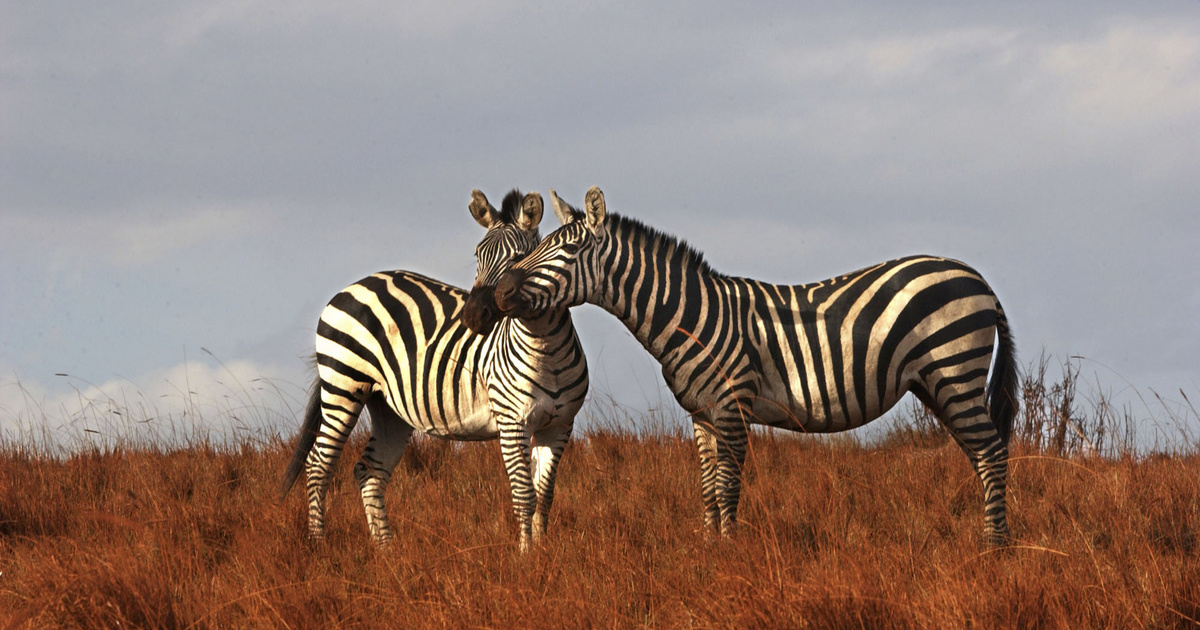Have you ever wondered why zebras have black and white stripes? And white stripes on a black background at all, or black on a white background?
The mystery of zebra stripes has occupied people for years, and now another solution has been offered to explain why and why black and white stripes form in the fur of African animals. There have been several explanations over the years for the peculiar fur color of zebras, which is very different from the surrounding savannah, including:
- The zebra is planned because it makes it easier to deceive predators that can attack, the stripes confusing the sight of the attacking big cats. This has been refuted.
- The color of the coat protects not only predators, but also bloodsuckers such as caecum and bedbugs. This assumption appears to be the most likely of all, and there is no refutation yet.
- The stripes are there because this is how zebras cool themselves, generating black and white airflow. This theory was refuted in detail by a group of scientists from ELTE and the Hungarian Museum of Natural History.
- Zebras recognize each other by their fur, and their color enhances social interactions. Error No clear refutation was made.
Biologists have also known since 1983 that zebras have white stripes on a black background: the American evolutionary biologist Stephen Jay Gould theorized that the primary color of the animals’ edges, nose, bump, and tail is black, so the stripes are white. Examination of zebra embryos has also shown that zebras begin to develop in the womb with black skin, and only at later stages of embryonic development appear stripes on black and white hairs.
These lines show in different amounts and shapes for each animal, the three species of zebra that live today – the Great Plain zebra (Equus Quagga), mountain zebra (Equus zebra), Grévy-zebra (Equus Griffe) and have a unique pattern relative to each other. interspecies differences exist in the location of the stripes, for example, there are those in which only the trunk is striped and the legs are no longer; There is a difference in color as well, the outer covering of the mountain zebra, for example, is true black, while the Grévy’s zebra is a more dark brown.
So the skin of the most famous African horse is definitely black, but what about the fur? White on a black background or vice versa? Attempts have also been made to answer the question by literal hair counting, with the result that there are more white hairs on zebras than black, and ergo hairs on a white background.
Genetic testing of zebras and their pigments can provide the exact solution.
Mammalian hair grows from a single follicle, which Melanosita They are full of cells (melanocytes). These are dark colored pigments, melanin They produce, the darker the coat color. In the case of zebras, the black hair is full of melanin, but the white is completely absent, and the follicles from which the light hair grows do not produce pigment.
According to behavioral and evolutionary ecologist and conservation biologist Tim Caro, during the development of zebras, something inhibits melanin production by melanocytes in the follicles from which white hair grows, but not in those from which black hair grows. The genetic reason for this has not been answered for zebras, but there is a genetic background in Africa For four striped grasshoppers (Rhabdomys pumilio), which has zebra like fur of light and dark stripes.
During the evolution of grasshoppers, activity in rodents is higher Jin Alex3 In areas of the body where the coat is lighter. Researchers in the journal Nature Published study According to Alx3 it can stop the development of genes that regulate melanocyte function, so clear lines remain in the animal body. A similar mechanism has been postulated behind the formation of zebras’ fur, which, if demonstrated, may provide confirmation that zebras have white stripes on a black background.
(Source: Live ScienceAnd QubitAnd Britannica)
(Cover Photo: Amy Vitaly / Getty Images)












































